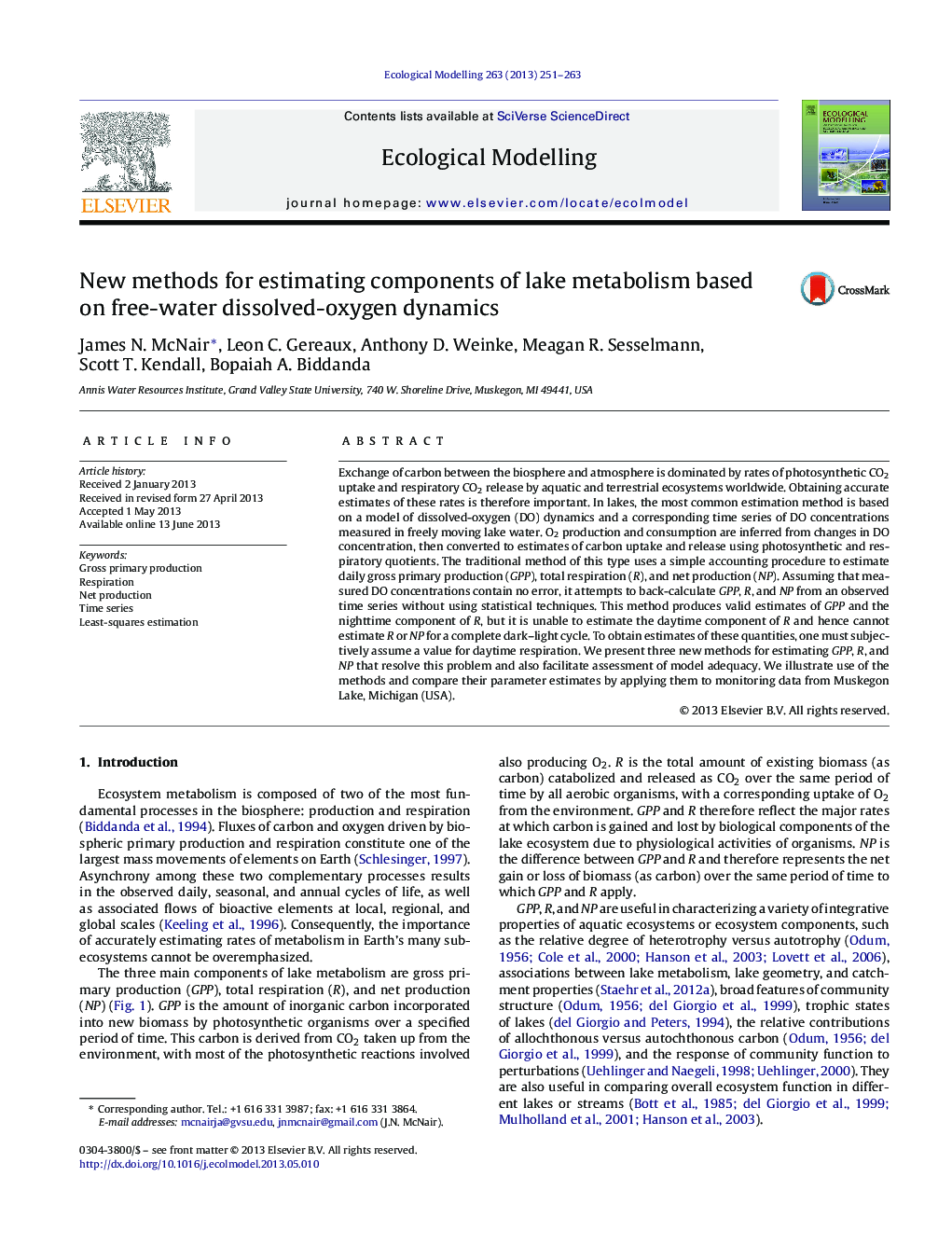| Article ID | Journal | Published Year | Pages | File Type |
|---|---|---|---|---|
| 6297198 | Ecological Modelling | 2013 | 13 Pages |
Abstract
Exchange of carbon between the biosphere and atmosphere is dominated by rates of photosynthetic CO2 uptake and respiratory CO2 release by aquatic and terrestrial ecosystems worldwide. Obtaining accurate estimates of these rates is therefore important. In lakes, the most common estimation method is based on a model of dissolved-oxygen (DO) dynamics and a corresponding time series of DO concentrations measured in freely moving lake water. O2 production and consumption are inferred from changes in DO concentration, then converted to estimates of carbon uptake and release using photosynthetic and respiratory quotients. The traditional method of this type uses a simple accounting procedure to estimate daily gross primary production (GPP), total respiration (R), and net production (NP). Assuming that measured DO concentrations contain no error, it attempts to back-calculate GPP, R, and NP from an observed time series without using statistical techniques. This method produces valid estimates of GPP and the nighttime component of R, but it is unable to estimate the daytime component of R and hence cannot estimate R or NP for a complete dark-light cycle. To obtain estimates of these quantities, one must subjectively assume a value for daytime respiration. We present three new methods for estimating GPP, R, and NP that resolve this problem and also facilitate assessment of model adequacy. We illustrate use of the methods and compare their parameter estimates by applying them to monitoring data from Muskegon Lake, Michigan (USA).
Related Topics
Life Sciences
Agricultural and Biological Sciences
Ecology, Evolution, Behavior and Systematics
Authors
James N. McNair, Leon C. Gereaux, Anthony D. Weinke, Meagan R. Sesselmann, Scott T. Kendall, Bopaiah A. Biddanda,
